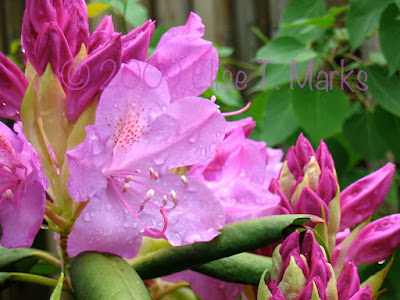Trixie in the garden. Gotta love her smile.
Comfrey flowers in bloom.
Comfrey (Symphytum officinale) has the folk name of Knitbone and it does that very well! The high allantoin content of the leaf infusion supports cell proliferation in the healing process of bones. Drinking comfrey infusion keeps my bones strong and flexible. It strengthens digestion and elimination, keeps lungs and respiratory tract healthy, and It keeps the face wrinkle-free and skin and scalp supple. Comfrey contains special proteins needed for the formation of short-term memory cells. Comfrey leaves are not only rich in proteins, they are a great source of folic acid, many vitamins, and every mineral and trace mineral we need for a strong immune system, a calm nervous system, and a happy hormone system.
Comfrey leaves are of much value as an external remedy, both in the form of fomentations, for sprains, swellings and bruises, and as a poultice, to severe cuts, to promote suppuration of boils and abscesses, and gangrenous and ill-conditioned ulcers. It’s useful for uterine and other internal hemorrhages and for the healing of wounds. It is useful in any kind of inflammatory swelling. Internally, the leaves can be taken in the form of an infusion, 1 oz. of the leaves to 1 pint of boiling water. Comfrey is infallible as a remedy for both external and internal wounds bruises, and ulcers, for phlegm, for spitting of blood, ruptures, hemorrhoids, etc. For ulcers of the stomach and liver.
Comfrey ointment heals wounds, cuts, burns, bruises, itches, and most skin problems.
The young leaves are eaten as a good green vegetable.













